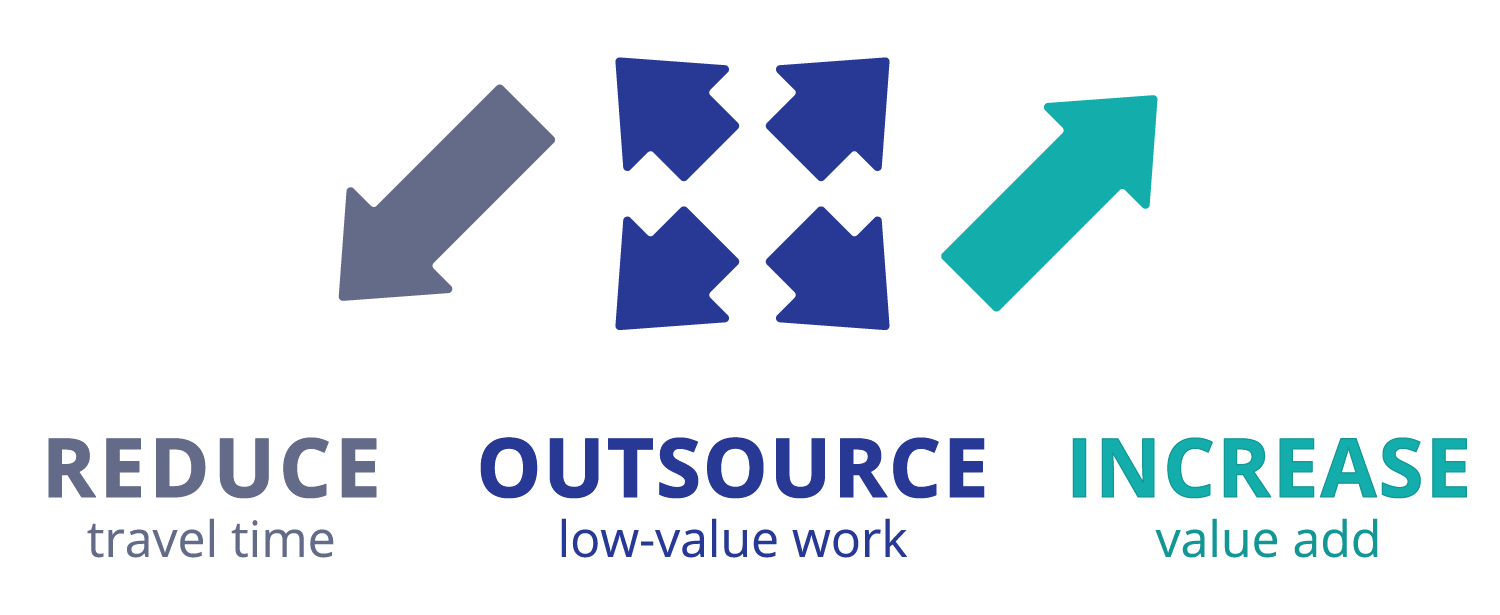
Rising technical resource costs have put extra pressure on service companies working to drive profitability in challenging times. In the field service space, it has never been more important to heed the right metrics, streamline operations, and save on costs wherever possible.
Field Nation has a model designed to help field service leaders identify opportunities to do things differently and improve their margins in the process. We call it the ROI model:

By challenging the norms of field service in three key areas and embracing the full breadth of options that a blended workforce allows, field service organizations can protect their margins and stay on the path to greater profitability.
1. REDUCE travel time
Getting technicians to the right place at the right time is an evergreen challenge in on-site technical work. Taking on jobs outside your core service geography often means committing your full-time technicians to a great deal of “windshield time” (the time it takes them to get to and from the worksite).
This is tedious for the tech and costly for the service company. Think about the travel expenses and sunk labor costs that go into every mile. No amount of route optimization can make these expenses less painful.
Instead of relying on these travel plans, consider tapping an alternate labor resource that is closer to the job. Not only does this reduce (or possibly eliminate) travel expenses, but it also maximizes the revenue your full-time technicians can generate by increasing the number of high-value jobs they can complete in a day.
2. OUTSOURCE low-value work
From a traditional utilization point of view, all “work” is effectively the same. After all, whether a technician is installing a new self-checkout for a retailer or simply wiping down an ATM with a microbial wipe, he or she is contributing to a high utilization rate.
However, work is not all the same, and it varies greatly in the amount of revenue it can generate for your company. (This is part of why we caution using utilization as a north star metric in field service.) In the example above, the self-checkout installation requires a significantly higher level of experience and technical training, and it probably involves company intellectual property. In other words, it is high-value work that belongs in the hands of a full-time employee.
The ATM wipedown, on the other hand, involves less expertise and risk of a poor outcome. It is commodity-level work that doesn’t require a lot of experience, which makes it a great fit for on-demand labor. By outsourcing this work to non-fixed expense talent, service companies can allow their full-time resources to focus on higher-value (and higher revenue) work.
3. INCREASE value add
Your field service technicians are often the only resources actually interacting with your customers. Accordingly, it’s important that they are empowered to maximize existing customer value.
Your technicians should view each job as an open-ended opportunity, as opposed to a mere transaction. Encourage them to ask questions that could lead to enhanced solutions. Can they identify any preventative maintenance needs? Is there additional equipment to be serviced? Can they help address any gaps in training?
By increasing value add per visit, you can leverage your most valuable resource (your technicians) to identify new ways of improving your customer’s brand affinity, which improves customer retention and can potentially increase the ticket value for that visit without incurring extra travel expenses.
Conclusion
Reduce travel time. Outsource low-value work. Increase value add. These three pillars of the ROI model can help your field service company lower costs and increase revenue.
This is a year of opportunity for the field service industry. Companies with their finger on the pulse and plan for responding to variable demand will be best positioned to win the moment.






